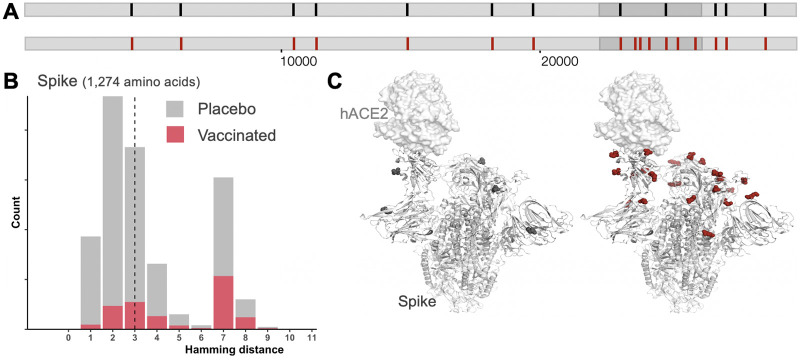Fig 1. Schematic representation of sieve effects in SARS-CoV-2 sequences from vaccine (red) and placebo (black) recipients who acquired infection in a preventive vaccine efficacy trial.
(A) Mutations/vaccine-mismatched residues (represented with tick marks) are preferentially found in vaccine recipients in the gene that is a component of the vaccine, the spike. (B) Viruses found in the vaccine group (red) are more distant from the vaccine sequence (Wuhan Hu-1 reference) than viruses in the placebo group (gray). The distribution in gray shows hamming distances between the vaccine and 156,260 circulating Spike sequences sampled between November 1, 2020 and February 1, 2021 [16]. The hamming distance corresponds to the number of differences between the vaccine insert and any circulating Spike sequence (n = 1,274 amino acids) (46 sequences showed more than 10 amino acid mutations when compared to the vaccine insert and were not represented). The distribution in gray represents the expected distribution in the placebo group, while the distribution in red represents the viruses infecting vaccine participants (after vaccine sieving). Since the vaccine presents the Spike to the immune system of vaccinated individuals, the distribution of hamming distances was restricted to Spike protein sequences to focus on sites relevant to the specificity of vaccine-induced immune responses. (C) Viruses in the vaccine group showed more vaccine-mismatched residues at contact sites for Spike-specific antibodies including RBD-specific antibodies (shown as red spheres) than viruses in the placebo group (black spheres) due to the presence of vaccine-elicited Spike-specific antibodies in vaccine recipients.

